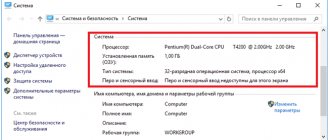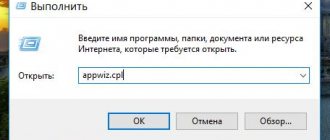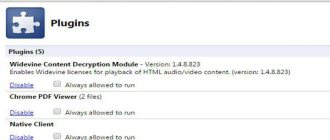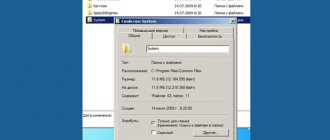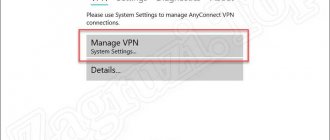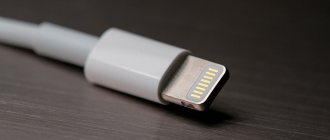Home » Internet settings » Err connection timed out how to fix this error
Google Chrome is one of the most popular Internet browsers, along with Mozilla Firefox, Internet Explorer or Opera. However, there are many types of errors that sometimes appear in the Google Chrome browser.
You may feel annoyed when you encounter these errors, especially errors like Err_Connection_Timed_Out , also known as Err Connection Timed Out or ERR_Connection_Refused .
This “connection” error will appear in your Google Chrome browser, in addition to the “This web page is not available” error message. This happens in your browser for several reasons such as:
- The host file is blocking the connection.
- The firewall is blocking the connection.
- Proxy not responding to local network settings.
- Incorrect setting in DNS settings.
However, you don't need to worry when you encounter this error. There are several simple solutions that you can use to solve this problem.
These solutions are step by step and easy to understand. As I mentioned above, this error occurs for many reasons. So, you need to try all the solutions until the problem is resolved.
Why does ERR_CONNECTION_TIMED_OUT occur?
An ERR_CONNECTION_TIMED_OUT error usually means that there is something wrong with the local network connection. However, there are other reasons.
According to WordPress support documentation, the net err connection timed out when your site tries to do more than your server can handle . This is especially common on shared hosting where your memory limit is limited.
When you visit a website and it doesn't load, your browser will try to connect for about 30 seconds or so until it drops the connection. After which it will return the error “ERR_CONNECTION_TIMED_OUT” indicating a connection problem. In Google Chrome this may appear as "This site can't be reached." Domain.com took too long to respond. "
Due to different web browsers, operating systems, and servers, the error may appear differently. But most of them have the same or similar meaning. "ERR_NETWORK_CHANGED" and "ERR_CONNECTION_REFUSED" are two very closely related errors that can usually be resolved using the same steps below.
Below are some examples of how the error may appear in different browsers.
Mozilla Firefox
In Mozilla Firefox the error will show as "The connection has timed out". The domain.com server is taking too long to respond.
Microsoft Edge
In Microsoft Edge, the error will display as “Hmmm... can't reach this page. Domain.com took too long to respond." However, in Edge it also contains the error "ERR_CONNECTION_TIMED_OUT".
Safari
In Safari, the error will appear as “Safari Can't Open the Page. Safari can't open the page domain.com because the server where this page is located isn't responding."
Why does the error message occur?
First of all, you need to clearly distinguish between types of errors. There are two interpretations of messages. The first position described above is somewhat general (standard), but there is one more point associated with the appearance of the net:: ERR_CONNECTION_TIMED_OUT error. Here we can also say that the error is due to a network connection failure. Moreover, this equally applies to local networks and Internet connections.
Often, the causes of such errors can be unstable communication, since constant interruptions make it impossible to receive a complete response data packet.
A very common situation is with online games that use multiplayer mode. It is clear, after all, that with a fairly high popularity of the game and a huge number of players currently connected to the game server, the latter may simply not withstand such a number of simultaneous requests. This is somewhat reminiscent of well-known situations with DDoS attacks, when server disruption is caused by too many simultaneous requests.
Sometimes the appearance of such an error may be due to the functioning of anti-virus software or the built-in firewall (firewall) Windows Firewall. Such security features may mistakenly identify website data as potentially unwanted or dangerous content when in fact it is not.
In some cases, the error may be due to incorrect configuration of the proxy server in the system or attempts to anonymously access the Network through online proxy servers in order to hide your true IP address. There is a solution for all these situations. Let's look at each of them.
How to fix ERR_CONNECTION_TIMED_OUT error
Where to start troubleshooting if you see this error on your WordPress site? Without a lot of context it can sometimes be frustrating and overwhelming where to start. This is usually either a client-side issue (network connection or firewall issues) or an issue with the server hosting the site (memory limits, execution time, etc.).
Check your connection
Google Chrome, Firefox and Edge recommend checking your network connection. While this may seem obvious, they all point to checking your connection first, as this is one of the most common causes of the error. Here are a few things we recommend:
- Reboot your home or office router. It only takes a few minutes and solves more problems than many people think. To do a complete power cycle, unplug the power source and wait 30 seconds before plugging it back in.
- Check if you have a bad or slow Wi-Fi connection. This is a common occurrence in busy public Wi-Fi hotspots such as cafes or airports.
Temporarily disable your firewall and antivirus
Firewalls and antivirus programs are designed to protect users and their systems. They regularly scan your device and automatically block any suspicious activity. However, this type of security can sometimes lead to connection problems.
This is because firewalls can often block pages they don't need or reject content that is completely safe. We've seen this many times with software like AVG. To check, try disabling your firewall and antivirus programs. Of course, this is only recommended if you know for sure that the site you are about to visit is safe.
Additionally, you should only temporarily disable this type of software. Once the scan is complete, enable it again to see if the error has been resolved so you don't become vulnerable to attacks. If you are constantly encountering errors due to your firewall or antivirus software, you may want to consider changing what you are using.
Antiviruses can give a so-called “false positive” result, which you can fill out. If you are 100% sure that the site you are visiting should not be blocked by antiviruses, you can report this to the software developer. Here are some quick links:
- AVG false positive form
- Norton false positive form
- Sophos false positive form
Disable proxy settings
Sometimes you may see the ERR_CONNECTION_TIMED_OUT error if you are using a proxy service. This is usually quite rare, especially on the client side. To disable or check if your proxy settings are enabled, follow these steps:
Go to Settings in your Chrome browser. This will open the full menu of options. In the System (you need to click Advanced at the bottom), you should find an entry called Proxy Settings . By selecting it, you will be taken to the corresponding menu:
Your next step depends on the system you are using. Windows users should click on LAN Settings and uncheck the "Use a proxy server for LAN" option. If you are a Mac user, you should find yourself in the appropriate menu. You will then have to uncheck all selected proxy protocols and check if the ERR_CONNECTION_TIMED_OUT issue has been resolved.
If you're on Windows, you'll see the Local Area Network (LAN) Settings window. Make sure to confirm that the “Use a proxy server for your local network” option is unchecked.
The same thing happens if you use a VPN like ExpressVPN or TunnelBear . Make sure you are not connected to them.
Change DNS servers
The next thing you can try is to change your DNS servers. By default, DNS servers are automatically assigned by your ISP. But you can try temporarily changing them to a public DNS server such as Google or Cloudflare .
- Some people prefer to use Google's public DNS (8.8.8.8 and 8.8.4.4) in the long run as they are sometimes more reliable.
- Cloudflare also offers secure and fast free DNS (1.1.1.1 and 1.0.0.1), which we will use in this example. If you want to use Google , the steps are the same, you just replace the DNS server addresses with Googles .
Tip: If you're already using a free DNS server and are having problems, deleting it and reverting to the default DNS servers of your ISP also sometimes fixes the situation.
Google and Cloudflare are not perfect 100% of the time, and there were a few cases where we noticed that switching back solved the problem. This is especially true if you use a Wi-Fi hotspot at an airport or coffee shop.
how to change DNS servers on Windows
how to change dns servers on MAC
Clear/refresh DNS
You can also try clearing your local DNS cache. This is similar to clearing your browser cache. The site you are trying to visit may not have the correct IP address. If you've just migrated your WordPress site to a new host, it's important to wait until the information has fully propagated. Sometimes this can take up to 24 hours. This depends on your DNS provider and the TTL value of your DNS records.
Windows
On Windows, simply open a command prompt and type the following:
ipconfig/flushdns
You should see "Successfully cleared DNS resolver cache" if it works.
MAC
For macOS users, you can enter the following into the terminal:
dscacheutil -flushcache
Note. On Mac computers, there is no message indicating the operation is complete.
Check the Hosts file
Every computer has what we call a local hosts file. This is a file that contains DNS records that are mapped to specific IP addresses. Typically this is only edited if you want to preview the DNS before switching domains to a new host. Or perhaps you have a local development site running using tools like Vagrant or Docker .
There are many different ways this file could have been modified or edited. Therefore, it is always a good idea to make sure that the website you are trying to access is not in this file. Just follow the instructions below.
Windows
The hosts file usually requires additional access. So, the first step is to open your text editor with administrator rights. Just click on the Start menu, find your text editor, right-click it and select Run as administrator. This can be done in any text editor such as Notepad, notepad++, Atom, etc. We are using Sublime in our example below.
In a text editor, click File → Open and navigate to the following location:
C:\Windows\System32\Drivers\Etc\
Click on the hosts file and “Open”.
Check and make sure the website you are trying to visit is not listed there. If so, remove the site from the hosts file.
MAC
To check the hosts file on Mac, we recommend getting a gas mask. This is a free application that can be used as a host file manager, host file editor and switcher between them. It's quick and easy! Otherwise, you can follow these steps to manually edit the hosts file on Mac.
Go to Utilities and then click Terminal.
Type the following command and press Enter (you will likely be prompted for your administrator password).
sudo nano /private/etc/hosts
Double-check and make sure that the website you are trying to visit is not listed in your hosts file. If so, remove it.
Check your domain's DNS
You should also ensure that your domain's DNS is set correctly with your hosting provider. If you recently moved your WordPress site to a new host, DNS may not have been cached correctly on your computer. In this case, step 5 (above) should solve it. Or it could just be that you need to wait a few hours for the DNS to fully propagate.
Clear browser cache
Web browsers store information in a cache on your computer. This includes your browsing history, saved login details and cookies - all of which are recorded so that relevant pages load faster the next time you visit.
Although they are useful, caches can cause numerous problems when they become out of date. Luckily, this problem can be easily resolved by clearing your cache.
But before you do that, you can easily check if the browser cache is the problem by first opening your browser in incognito mode. Or you can try a different browser. If you still see the error, then you will need to clear your cache.
In this example we will use Google Chrome. Start by opening the main menu (top right corner of your browser window). From there, select More Tools. Then click Clear Browsing Data.
On the resulting page, you need to make sure that all listed file categories are selected. If this is not the case, Chrome will not be able to clear the entire cache. Instead, it will simply delete the most recent entries, which will not have the desired effect:
An alternative method to complete this process is to enter the following URL into the address bar:
chrome://settings/clearBrowserData
The resulting screen should give you access to the same options we described above. Here are some other useful links for clearing cache.
- How to force one page to refresh for all browsers
- How to clear browser cache for Google Chrome
- How to clear browser cache for Mozilla Firefox
- How to Clear Browser Cache for Safari
- How to clear browser cache for Internet Explorer
- How to Clear Browser Cache for Microsoft Edge
- How to clear browser cache for Opera
Look at the maximum execution time of an operation
The remaining troubleshooting steps we'll cover are those related to setting up your WordPress site or server, which can help fix the "ERR_CONNECTION_TIMED_OUT" error.
The first is the maximum operation time set for your site. On most servers the default time is set to 30 seconds. This is the period of time during which the PHP script is allowed to run (after which it shuts down). On shared hosts this value is usually set to a low value or left at the default.
You can't easily change this from the WordPress dashboard since the php.ini file resides on your server. To change the maximum execution time, we recommend contacting your hosting provider to see if they can help.
If you want to try changing this yourself, you can usually do so using one of the following options. Both will depend on how your hosting provider configures their servers.
Option 1 – Change the maximum execution time in the php.ini file
If you have a php.ini file in your home directory, find the max_execution_time setting and change it. For example, if it is set to 30 seconds, you can increase it to 300 seconds.
max_execution_time = 300

